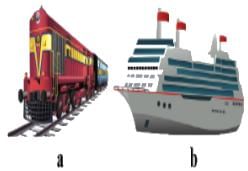Test: Resources of India and World- 2 - Class 5 MCQ
15 Questions MCQ Test - Test: Resources of India and World- 2
In which of the following years, India formulated the National Jute Policy?
Agro-based industries are those that ____________.
Read the following statement:
- Cottage industrial occupations are hereditary in nature.
- Some of the goods produced in cottage industries, are also exported .
- Cottage industries adopt high level of technology and required huge capital.
Which of the following is correct ?
Joint sector industry is a type of industry based on ______.
Sariska and Ranthambore are the reserves for which of the following?
The industry that requires maximum investment of rupees one crore and above is categorized as _________.
Where was the first Cement Plant set up in India?
With reference to Indian Railway Zones and their Headquarters, which one of the following pairs is not correctly matched?
A piece of land that is normally used for farming but is left uncultivated for a while so that the soil recovers fertility is called _________.
Refer to the given figure and answer the question:
Which of the above is commonly run by CNG?


Which state is known as the Spice Garden of India?
In which of the following means of communication, there is digital transmission of the message?
In India the highest production of Jute comes from














